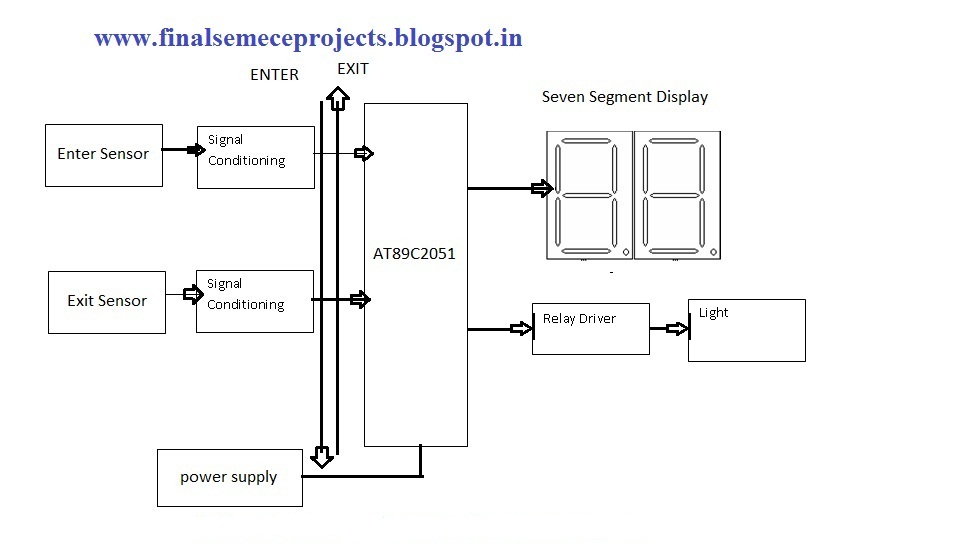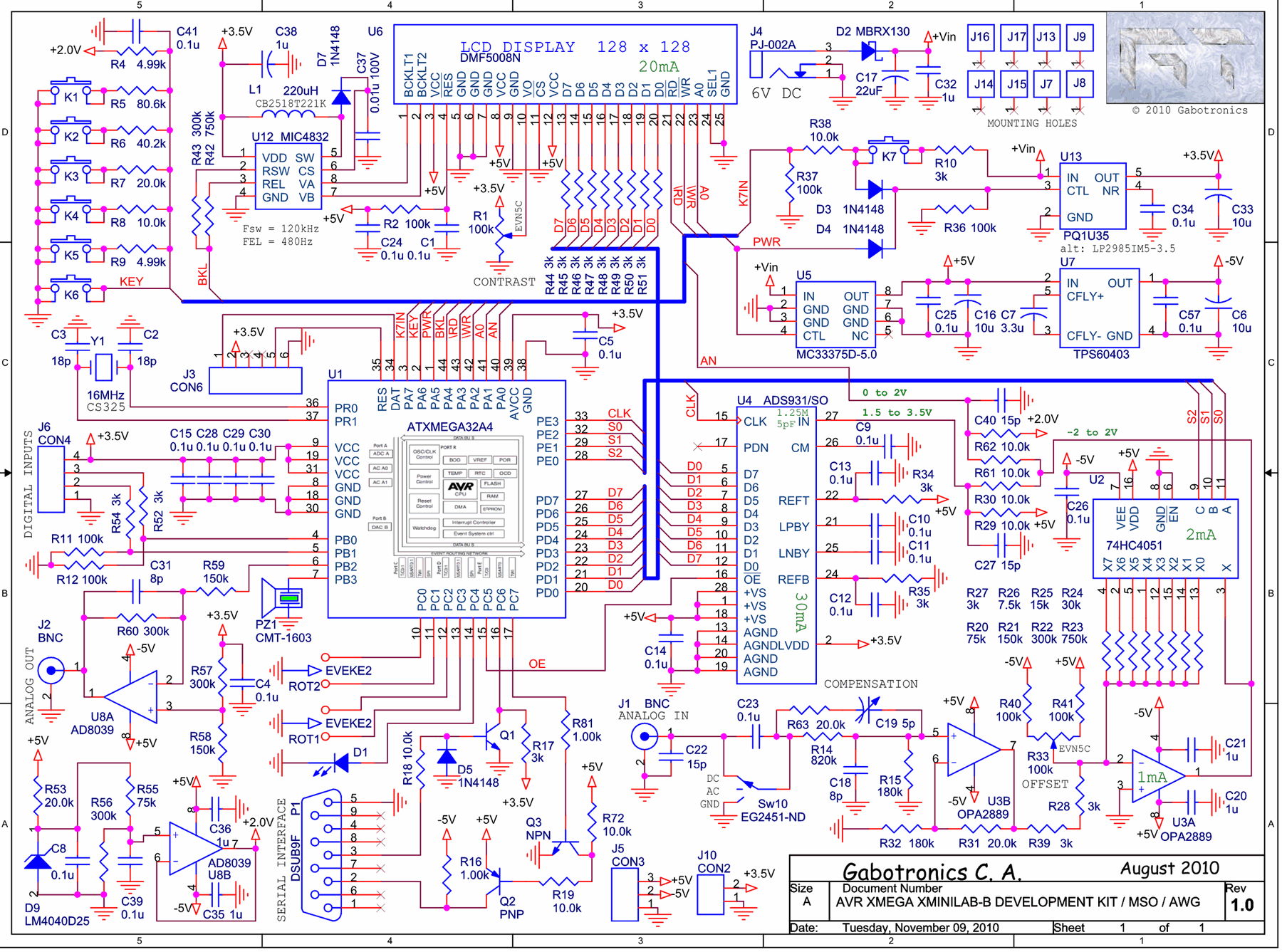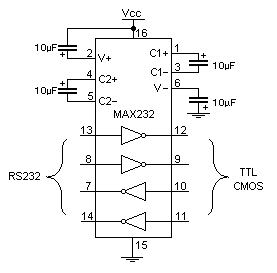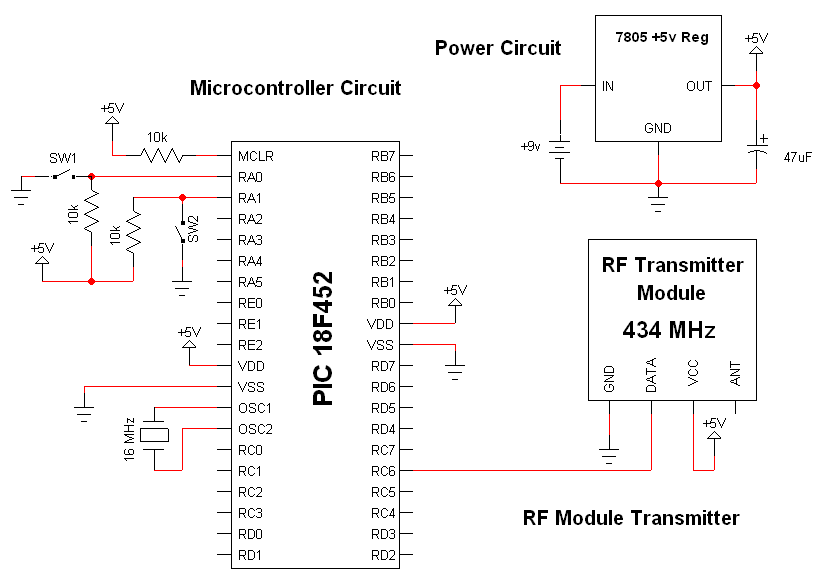
Microcontroller Relay Driver and Interface

Many microcontroller designs typically integrate various interfacing methods. A microcontroller (µC) system can be viewed as a system that reads from inputs.
Microcontroller systems are versatile platforms that facilitate the integration of multiple interfacing methods to interact with various peripherals and components. These systems often employ digital and analog inputs and outputs to manage tasks ranging from simple control operations to complex data processing.
In a typical microcontroller schematic, the microcontroller unit serves as the central processing unit (CPU), which executes programmed instructions and manages the flow of data between different interfacing modules. Common interfacing methods include GPIO (General Purpose Input/Output) pins, ADC (Analog to Digital Converters), PWM (Pulse Width Modulation), and communication protocols such as I2C, SPI, and UART.
The schematic usually features power supply connections that provide the necessary voltage levels to the microcontroller and associated components. It also includes decoupling capacitors placed near the power pins of the microcontroller to stabilize the power supply and filter out noise.
Input devices such as sensors and switches are connected to the microcontroller's input pins. These devices can provide digital signals (on/off states) or analog signals (varying voltage levels), which the microcontroller processes based on its programmed logic.
Output devices, such as LEDs, motors, or displays, are connected to the output pins, allowing the microcontroller to control these components based on the input data it receives. Additionally, communication interfaces enable the microcontroller to communicate with other devices or systems, enhancing the overall functionality of the design.
In summary, a microcontroller system's schematic encompasses a well-organized arrangement of various interfacing methods, ensuring seamless interaction between the microcontroller and its peripheral devices, thereby enabling complex tasks to be performed efficiently.Many microcontroller designs typically mix multiple interfacing methods. A microcontroller (µC) system can be viewed as a system that reads from inpu.. 🔗 External reference
Microcontroller systems are versatile platforms that facilitate the integration of multiple interfacing methods to interact with various peripherals and components. These systems often employ digital and analog inputs and outputs to manage tasks ranging from simple control operations to complex data processing.
In a typical microcontroller schematic, the microcontroller unit serves as the central processing unit (CPU), which executes programmed instructions and manages the flow of data between different interfacing modules. Common interfacing methods include GPIO (General Purpose Input/Output) pins, ADC (Analog to Digital Converters), PWM (Pulse Width Modulation), and communication protocols such as I2C, SPI, and UART.
The schematic usually features power supply connections that provide the necessary voltage levels to the microcontroller and associated components. It also includes decoupling capacitors placed near the power pins of the microcontroller to stabilize the power supply and filter out noise.
Input devices such as sensors and switches are connected to the microcontroller's input pins. These devices can provide digital signals (on/off states) or analog signals (varying voltage levels), which the microcontroller processes based on its programmed logic.
Output devices, such as LEDs, motors, or displays, are connected to the output pins, allowing the microcontroller to control these components based on the input data it receives. Additionally, communication interfaces enable the microcontroller to communicate with other devices or systems, enhancing the overall functionality of the design.
In summary, a microcontroller system's schematic encompasses a well-organized arrangement of various interfacing methods, ensuring seamless interaction between the microcontroller and its peripheral devices, thereby enabling complex tasks to be performed efficiently.Many microcontroller designs typically mix multiple interfacing methods. A microcontroller (µC) system can be viewed as a system that reads from inpu.. 🔗 External reference





